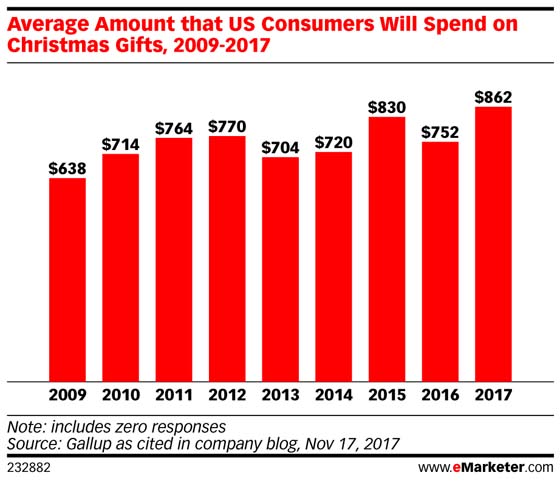Despite shifts, the day’s results still matter a lot
In Manhattan’s Herald Square on Thanksgiving night, shoppers thronged stores from Macy’s to JC Penney.
Awa Diaby, a 33-year old hairdresser, was one of those shoppers. Close to midnight on Thursday, she was at an Aeropostale store in Manhattan Mall waiting for her two younger sisters, who were still shopping for the chain’s store-wide 60% to 70% off sale. She looked tired, and no wonder: They had been out since 4 p.m. At her side were some 10 shopping bags from stores including Macy’s and Victoria’s Secret containing, according to her, more than $1,000 of merchandise.
Asked some of the deals she had found, she gave a shrug, then pointed to an $89 pair of shoes she got at Steve Madden for $34.
“It’s not like Black Friday shopping from a few years ago,” said Diaby. She said she doesn’t do online shopping and has been an in-store Black Friday shopper for years. “This is everyday shopping. You can get deals all the time now. I was bored and decided to come out.”
Diaby’s experience highlights the changing dynamics of Black Friday. Yes, the traditional start of retailers’ biggest selling season is still relevant for many. But retailers’ year-round promotions and ever earlier-and-longer-running Black Friday-type promotions have made the big sales day’s deals less exciting. (Diaby pointed with disappointment to Express’s 50% off storewide Black Friday sale that she said she could easily have other times of the year).
Black Friday still is a barometer of retailers’ performance for rest of the season: more than two-thirds of companies that don’t hit their Black Friday average will fall short of their average for the holiday season as a whole, according to a study of 11 million purchases from 2013 to 2016 by personalization software firm Monetate.
Shopper visits dropped less than 1% on Friday, according to mall traffic tracker ShopperTrak. Including Thursday traffic, visits declined a combined 1.6% from the same days a year earlier as ShopperTrak said more stores have chosen to close on Thanksgiving.
“There has been a significant amount of debate surrounding the shifting importance of brick-and-mortar retail, and the fact that shopper visits remained intact on Black Friday illustrates that physical retail is still highly relevant and when done right, it is profitable,” said Brian Field, senior director of advisory services for ShopperTrak, in a statement.
ShopperTrak still expects Black Friday to be retailers’ top sales day of the season.
RetailNext Retail Performance Pulse also points to shifting traffic patterns. It noted while fewer stores were open on Thanksgiving, they were “productive hours” relative to shopper traffic. Its data showed that traffic on Black Friday dropped 4.5% but on Thursday, it rose 6.7%. To be sure, it said its traffic numbers come from tracking devices at the store level and are not representative of overall mall traffic.
While retailers including H&M have in recent years opted to close on Thanksgiving, major department stores, other specialty clothing chains, electronics retailers and discounters including Walmart, Target, Gap and Best Buy have continued the practice of opening their doors to market Black Friday doorbusters deals on Thursday instead.
Industry watchers also have said declining Black Friday traffic shouldn’t be too big of a concern: it represents consumers’ more targeted mobile-aided shopping and increased research online before finishing their purchases in store in increased “webrooming.“
Cowen & Co., for instance, forecast that overall Black Friday week sales could rise up to 5% because it expected a decline in physical store traffic would be offset by higher conversion rates. Meanwhile, sales also have been helped by online purchasing that it said could increase at least 15% to 20%. In another encouraging sign, Cowen said retailers’ profit margins “could hold up” because they have done a better job of controlling inventory and having more targeted promotions.
Not surprisingly, other studies also point to continued sales shift online, helped by Amazon’s dominance and Black Friday Deals Week push and physical retailers’ own growing online emphasis.
Adobe, which said it tracks 80% of online transactions at the top 100 U.S. online retailers, said Thanksgiving day online sales rose nearly 20% to a record $2.87 billion while they rose 16.9% to a record $5.03 billion on Black Friday. In the month of November through Friday, online sales jumped 17.8% to $38.3 billion, topping its prior forecast. Adobe projects Cyber Monday itself will also hit record online sales of $6.6 billion this year, a 16.5% increase from last year.
Also as expected, mobile is playing a more central role. On Black Friday, for instance, mobile devices drove 54.3% of web visits and 37% of online sales, according to Adobe. Smartphones alone represented 44.6% of visits and 26% of revenue.
On the other hand, Verizon’s Holiday Retail Index showed a 28% decrease in online traffic to top 25 online retailers on Thanksgiving and a 25% year-over-year drop on Black Friday, the first such decrease it said it’s seen.
“Consumers realize it’s a marathon, not a sprint,” said Michele Dupré, group vice president for retail, hospitality & distribution with Verizon Enterprise Solutions. “Retailers need to be prepared. Everything used to be built around Black Friday. Now….shopping starts in early November and continues to December 24. Retailers must keep consumers engaged throughout.”
by Andria Cheng

